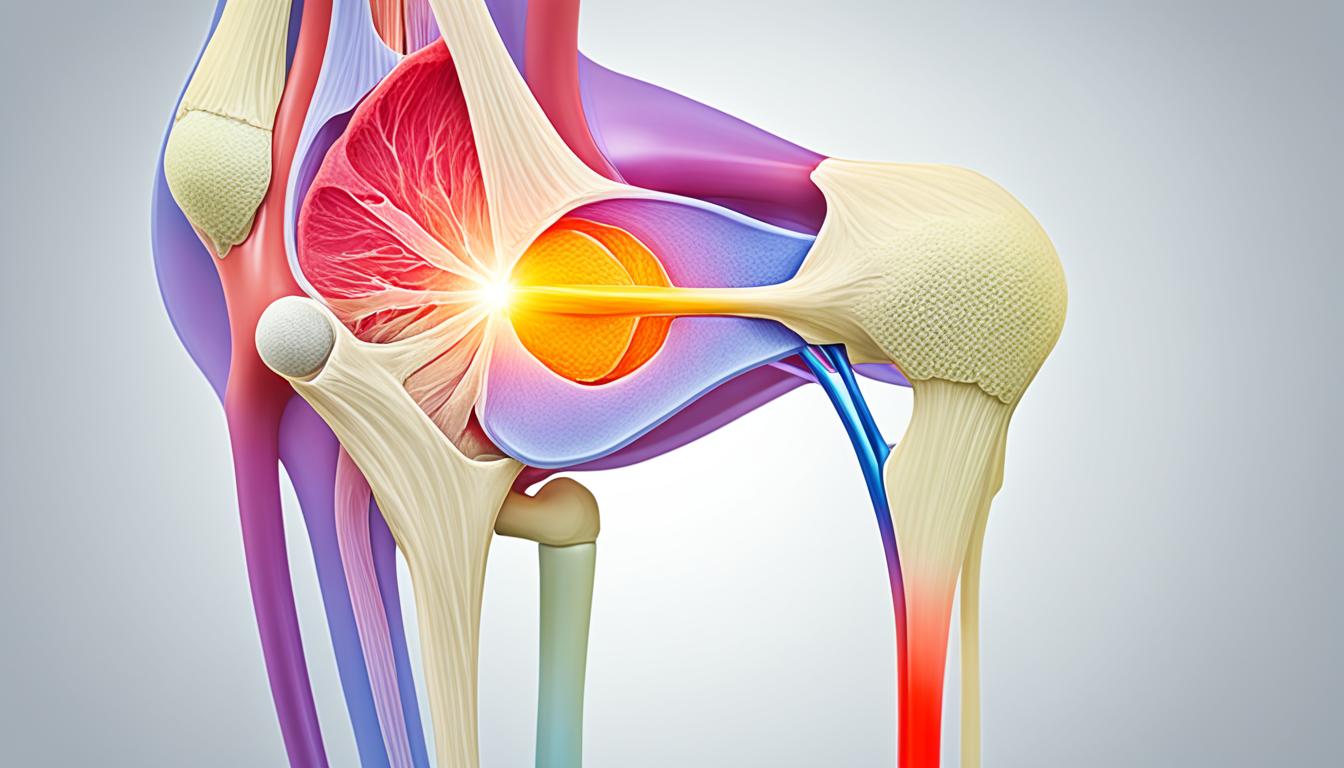A hip labral tear is a usual injury that brings a lot of pain. It can change how a person goes about their day. People in sports with lots of jumping and running are more likely to get this injury. Until recently, fixing a hip labral tear meant surgery. This could lead to issues and a long time off to heal.
But now, there are treatments that don’t need surgery. Stem cell therapy and super concentrated platelets (SCP) therapy are two such options. Both of these use the body’s own power to heal. They fix the damaged part and help it heal without surgery.
Key Takeaways:
- A hip labral tear is a common injury that causes pain and affects daily life.
- Athletes involved in high impact sports are more susceptible to hip labral tears.
- Traditional treatment options for hip labral tears often involve surgery.
- Non-surgical treatments like stem cell therapy and SCP therapy offer alternatives to surgery.
- Stem cell therapy and SCP therapy utilize the body’s regenerative properties to repair damaged tissue in the hip joint.
Understanding Hip Labral Tears: Causes, Symptoms, and Diagnosis
A hip labral tear happens when the cartilage around the hip joint’s socket is damaged. This injury can be from different things, like hip joint trauma, doing the same movements over and over, or the hip joint just wearing out.
Feeling pain in the hip or groin is a common sign of a hip labral tear. The pain might get worse when you walk a lot or sit for long periods. You might also feel a click or catch in your hip, find it hard to move, or feel stiff.
Causes of Hip Labral Tears
- Trauma to the hip joint, such as a fall or direct impact
- Repetitive movements that put stress on the hip joint, such as twisting or pivoting
- Structural abnormalities in the hip joint, such as hip dysplasia
- Degenerative changes in the hip joint due to age or wear and tear
Doctors often use imaging tests to find out if you have a hip labral tear. X-rays show the bones and can check for other hip problems. MRI scans are great for seeing the soft tissues, like the labrum, and can tell if there’s a tear and how bad it is.
Sometimes, doctors need to do more tests, like hip arthroscopy, to be sure about the tear. Hip arthroscopy is a type of surgery that’s not too invasive. It lets doctors look inside your hip and fix it using small cuts and special tools.
Getting the right diagnosis is key to treating a hip labral tear the best way possible. Next, we’ll talk about treatments that don’t involve surgery, like stem cell therapy and super concentrated platelets (SCP) therapy.
Non-Surgical Treatment Options for Hip Labral Tears: Stem Cell Therapy and SCP Therapy
Patient with hip labral tears can look to treatments without surgery for relief. Stem cell therapy uses the patient’s own stem cells to fix the tear. It’s a small procedure that doesn’t need surgery, giving a gentler choice.
SCP therapy is another choice. It involves injecting concentrated platelets into the hip. These platelets help with healing by releasing growth factors. SCP can be used alone or with stem cell therapy, based on what the patient needs.
Stem cell and SCP therapies are proving to be good options for pain and healing in hip labral tear patients. They offer alternatives to surgery like hip arthroscopy. With possibly quicker recoveries, these treatments are worth discussing with a doctor.

